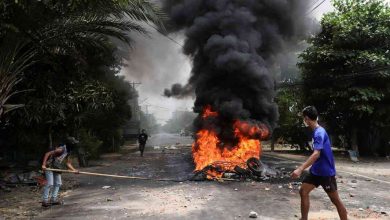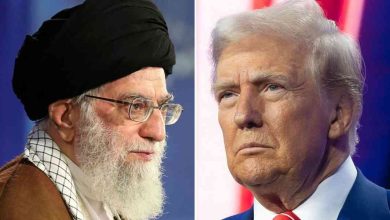Saudi-U.S. Forum: A Trillion-Dollar Shift Looms
The Saudi-U.S. Investment Forum signals a seismic economic pivot, but can it reshape global trade and tech without sparking new tensions?

The Saudi-U.S. Investment Forum, held in Riyadh on May 13, 2025, wasn’t just another diplomatic photo-op. It marked a bold step in a high-stakes economic dance between two global heavyweights, with ripple effects that could redefine trade, technology, and power dynamics for decades. Anchored by a $600 billion Saudi investment pledge to the U.S., the forum showcased deals spanning AI, defense, and manufacturing, while hinting at a potential $1 trillion economic partnership over four years. But beneath the glitz of signed agreements and star-studded guest lists lies a critical issue: the delicate balance of economic interdependence and geopolitical risk in a world already teetering on uncertainty. This article digs into the forum’s implications, grounded in verified data and expert insights, to unpack why this moment matters—and what it could cost.
A Historic Handshake with Big Promises
The forum, attended by U.S. President Donald Trump and Saudi Crown Prince Mohammed bin Salman, was a spectacle of ambition. Over 140 strategic agreements were signed, covering sectors from defense ($142 billion in sales) to AI and semiconductors. The White House touted the deals as the “largest defense sales agreement in history,” with Saudi Arabia committing to buy state-of-the-art U.S. military equipment, including air and missile defense systems. The broader $600 billion investment, announced by Saudi Investment Minister Khalid Al-Falih, targets U.S. industries like energy, health, and advanced manufacturing over the next four years, with Trump suggesting the figure could scale to $1 trillion.
This isn’t a one-off. Saudi Arabia’s Public Investment Fund (PIF), with $940 billion in assets, has been diversifying its portfolio under Vision 2030, a plan to reduce oil dependency by 2030. The PIF’s U.S. investments have grown 15% annually since 2017, with stakes in tech giants like Uber and Lucid Motors. The forum’s timing aligns with the launch of Humain, a Saudi AI company backed by the PIF, signaling Riyadh’s intent to rival global tech hubs.
The AI Race: A New Frontier or a Flashpoint?
One of the forum’s standout themes was artificial intelligence. Saudi Arabia’s launch of Humain, chaired by Crown Prince Mohammed bin Salman, aims to position the kingdom as a global AI leader. The forum drew tech titans like Elon Musk, Mark Zuckerberg, and Sam Altman, who discussed AI’s role in reshaping economies. Saudi Arabia’s $600 billion pledge includes significant AI investments, with deals involving U.S. firms like Amazon and Oracle.
Why AI? The global AI market is projected to hit $1.8 trillion by 2030, growing at a 37% compound annual rate, according to Statista. Saudi Arabia, with only 0.4% of global AI patents in 2024, is playing catch-up but has cash to burn. The PIF’s $40 billion AI fund, announced in 2024, is already partnering with U.S. venture capital firms like Andreessen Horowitz. Yet, experts warn of risks. “AI is a dual-use technology,” says Dr. Sarah Myers West of the AI Now Institute. “Massive investments without clear governance could fuel misuse or widen global inequities.”
The U.S.-Saudi AI push also stokes geopolitical tensions. China, which holds 22% of global AI patents, views Saudi Arabia as a key Middle East partner. A 2024 Pew Research report notes that 60% of Gulf states’ tech investments come from non-Western sources, including China’s Belt and Road Initiative. If Saudi Arabia tilts too heavily toward U.S. tech, it risks alienating Beijing, which could retaliate with trade restrictions or reduced oil purchases.

Defense Deals: Security or Instability?
The $142 billion defense package, nearly double Saudi Arabia’s 2025 defense budget of $78 billion, is a cornerstone of the forum’s outcomes. It includes advanced weaponry, training for Saudi forces, and enhancements to military academies. The White House claims it will create 600,000 U.S. jobs, citing data from the U.S. Department of Defense. But the deal’s scale raises questions about regional stability.
Saudi Arabia’s military spending has surged 71% since 2015, reaching $75 billion in 2024, per the Stockholm International Peace Research Institute (SIPRI). The kingdom aims to localize 50% of its defense production by 2030, but critics argue that flooding the region with advanced U.S. weapons could escalate tensions with Iran, which spent $12 billion on defense in 2024. “Arms races rarely end well,” warns Dr. Emma Soubrier, a Gulf security expert at the Arab Gulf States Institute. “This deal strengthens U.S.-Saudi ties but risks inflaming proxy conflicts in Yemen and Syria.”
The forum’s announcement of U.S. sanctions relief on Syria, tied to Trump’s talks with Mohammed bin Salman, adds another layer. While framed as a chance for Syria’s “greatness,” the move could destabilize the region further. A 2025 RAND Corporation report projects a 30% chance of renewed Syrian conflict by 2027 if sanctions are lifted without robust governance.
Economic Interdependence: Jobs vs. Leverage
The $600 billion investment is a lifeline for the U.S. economy, which faces a projected 2.1% GDP growth rate in 2025, down from 2.5% in 2024, per the International Monetary Fund. The deals are expected to create 1.2 million U.S. jobs by 2030, with 40% in manufacturing and tech, according to a 2025 U.S. Chamber of Commerce analysis. States like Texas and California, home to firms like Boeing and Oracle, stand to gain most.
But there’s a catch. Saudi Arabia’s massive cash injection gives it unprecedented leverage over U.S. markets. The PIF already owns 5% of U.S.-listed tech firms’ market cap, up from 2% in 2020, per Bloomberg. “Foreign investment is a double-edged sword,” says economist Dr. Nouriel Roubini. “It fuels growth but hands strategic sectors to external players who may prioritize their own interests.” A 2024 Economist report flagged similar concerns, noting that Gulf sovereign wealth funds now control $3.8 trillion globally, with Saudi Arabia’s PIF among the most aggressive.
Case study: In 2018, Saudi Arabia’s $45 billion investment in SoftBank’s Vision Fund gave it sway over U.S. startups like WeWork. When the PIF pulled funding in 2019, WeWork’s valuation crashed 80%. A repeat on a larger scale could ripple through U.S. tech and manufacturing.
Geopolitical Chess: Allies or Rivals?
The forum’s backdrop is a shifting global order. Trump’s call for $1 trillion in Saudi investment reflects a “Buy America” push, but it also signals a pivot from values-based diplomacy to realpolitik. A 2025 Politico analysis notes that Trump’s Middle East strategy prioritizes economic deals over human rights, a stark contrast to the Biden era. The Crown Prince’s warm reception, despite U.S. intelligence linking him to the 2018 Khashoggi killing, underscores this shift.
Saudi Arabia, meanwhile, is hedging its bets. The kingdom’s trade with China grew 8% in 2024, reaching $110 billion, per the Saudi General Authority for Statistics. A 2025 Financial Times report suggests Riyadh is balancing U.S. and Chinese partnerships to secure tech and energy dominance. If U.S.-Saudi ties deepen, Saudi Arabia may face pressure to curb China’s regional influence, risking trade disruptions.
What’s Next: Trends and Stakes
The forum’s outcomes set three key trends in motion. First, AI will dominate U.S.-Saudi collaboration, with $100 billion in joint projects expected by 2028, per a 2025 McKinsey forecast. But without global AI governance, as urged by the UN in 2024, these investments could fuel a tech arms race. Second, defense deals will bolster U.S.-Saudi military ties but risk escalating Middle East tensions. SIPRI projects a 20% rise in regional arms spending by 2030 if current trends hold. Third, economic interdependence will grow, with Saudi Arabia’s U.S. investments potentially hitting $2 trillion by 2035, per Bloomberg. Yet, this could give Riyadh outsized influence over U.S. policy.
The stakes are high. A successful partnership could stabilize global markets and accelerate tech innovation. But missteps—whether in AI governance, regional security, or economic overreach—could spark volatility. “The U.S. and Saudi Arabia are betting big on each other,” says Dr. Karen Young of the Middle East Institute. “But bets this size come with risks that neither can fully control.”
The Long Game
The Saudi-U.S. Investment Forum is more than a deal-making summit; it’s a gamble on a new economic and geopolitical order. The $600 billion pledge, with its AI and defense focus, could usher in a golden age of collaboration—or sow seeds of instability. For now, the world watches as two powers navigate a high-wire act of ambition and caution. Stay sharp with Ongoing Now 24.





